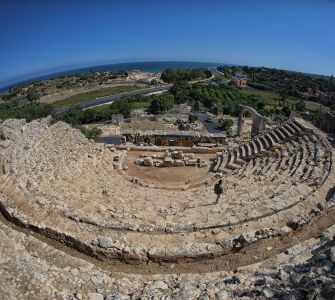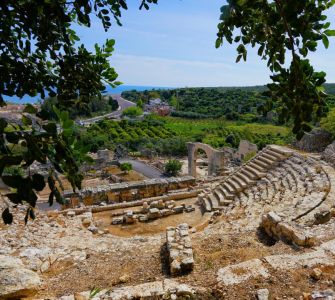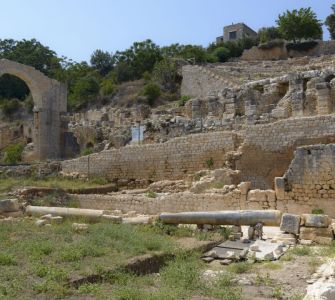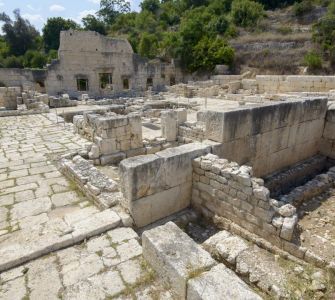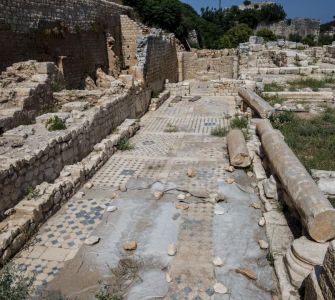Elaiussa Sebaste is one of the important ancient port cities of Cilicia. The city of Elaiussa was formerly built on a peninsula in the form of an isthmus with bays on both sides. Elaiussa means olive grove. As can be understood from the olive oil production workshops in Kanlıdivane, olive and olive oil production has always been important for this region. During the Roman period, Emperor Augustus gave this place to the governor of Cappadocia as a gift and the city of Sebaste was established on the land part of the peninsula. Sebaste, on the other hand, means “splendidly happy”. Over time, these two cities merged and were named Elaiussa Sebaste. There are almost no remains on the small island, where the city was first established, because they were sank into the sand.
The important ruins to be seen are:
- In the northern part of the road, the theater with a capacity of 2300 people and 23 steps stands out.
- The water towers used by the Romans to carry water from the Lamos (lemon) brook here and to Korykos (Kizkalesi) are also among the important artifacts.
- The basilica with 5 naves built during the Byzantine period on the city agora (assembly area) in the Roman period is very well preserved until today.
- Another must-see in Elaiussa Sebaste is the heating system dating to the 2nd century, and the ancient bath with an inscription containing the health wishes of those who come to bathe.
- During the last excavations, a 4.5-kilometer-long King's road was found, extending from here to the Maiden's Castle.
- The palace gate with two marble columns and the temple with various animal mosaics are also must-sees.
- We also recommend you to see the necropolis (city cemetery) area in the north of the city.
Elaiussa Sebaste Ancient City History
While Elaiussa was an important port city of the Olba Kingdom, it gained its independence over time and became famous especially with the trade of olive oil, amphora and wine by merging with Sebaste.. The city, which was weakened by pirate attacks in the 1st century A.D, was revived after the Roman Empire suppressed the pirates.
It took the title of "metropolis" in the 2nd century AD. The city, which weakened again with the Sassanid invasion, gained religious importance with the churches and basilicas built in the Byzantine period in the 5th and 6th centuries. Afterwards, the city, which was emptied due to political instability, attacks by Arab pirates and earthquakes, completely lost its importance as the ports were filled with sand.
Where is Elaiussa Sebaste Ancient City? Directions Information. How to Get to the Ancient City?
Elaiussa Sebaste is a hard-to-pronounce but very easy to reach historical site. Elaiussa Sebaste, located within the borders of Ayaş Town of Erdemli District of Mersin, is 18 km from Erdemli and 55 km from Mersin.
Mersin-Antalya intercity buses can be preferred, as well as Mersin-Silifke minibuses to go to Elaiussa Sebaste. Elaiussa Sebaste is right on the Mersin-Antalya highway, such that a significant part of the ancient city, including the theater, is located to the north of the road and the other part to the south of the road on the sea side.
Admission to Elaiussa Sebaste is free.
Places to be seen around Elaiussa Sebaste
- Kız Kalesi: 5. km
- Narlıkuyu Museum: 8 km
- Hell and Heaven: 9 km
- Asthma Cave: 9 km
- Adamkayalar: 10 km
- Kanlıdivane: 8 km
- Kayacı Valley: 13 km
- Cambazlı Church: 24 km
- Aşağı Dünya Sinkhole: 25 km
- Silifke Museum: 30 km
- Aya Tekla:Temple: 30 km
- Silifke Castle: 31 km
- Olba Ancient City 33 km
- Uzuncaburç Ruins: 39 km





